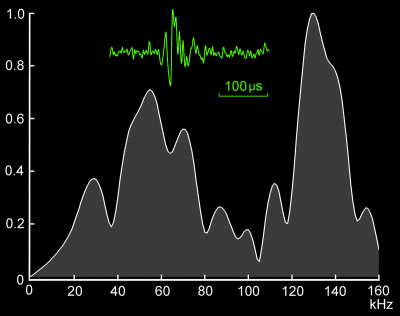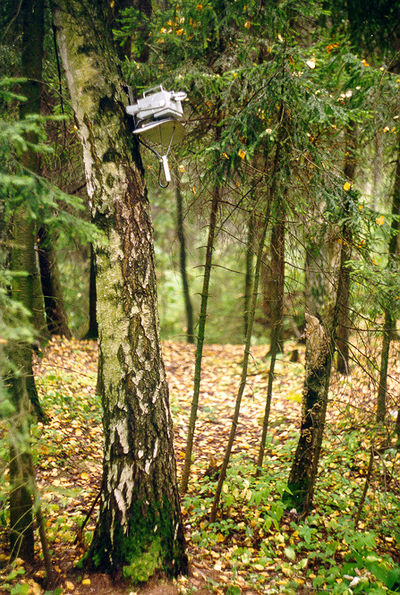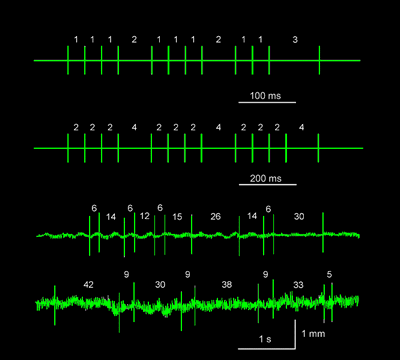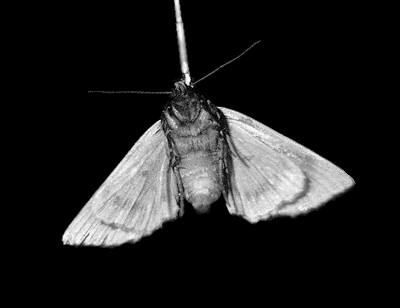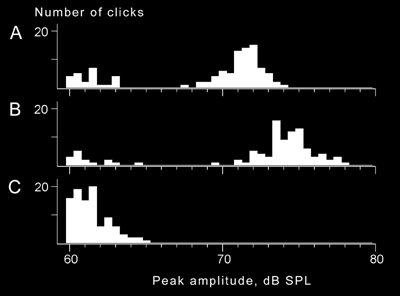Sound production in moths
Many moths produce high-frequency short ultrasonic clicks. It is rather easy to record them. Sometimes a young man with a good hearing can perceive these clicks from a short distance because a small part of a click energy falls below 20 kHz while the amplitude of a click is about 80 dB. They look like quiet electric discharges.

